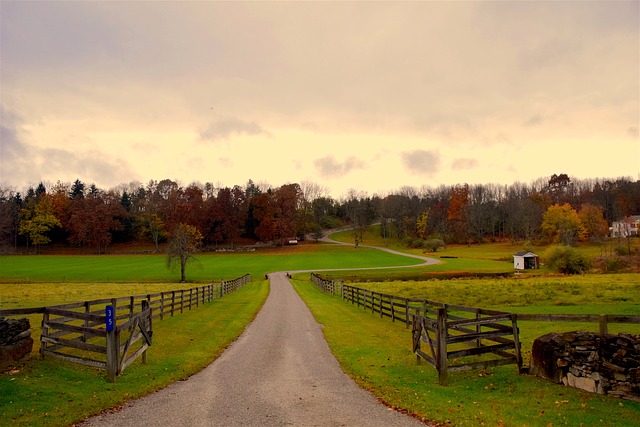 PR and marketing experts typically express confidence in online videos, interactive digital content and other advance online strategies to reach customers and stakeholders. Here’s the rub: more than 25 million Americans cannot access broadband internet connection, according to the Federal Communications Commission (FCC). More than 19 million of those people live in rural communities. New Microsoft research reports a more dire picture. It concludes that 162.8 million people in the U.S., mostly in rural areas, do not use the internet at broadband speeds.
PR and marketing experts typically express confidence in online videos, interactive digital content and other advance online strategies to reach customers and stakeholders. Here’s the rub: more than 25 million Americans cannot access broadband internet connection, according to the Federal Communications Commission (FCC). More than 19 million of those people live in rural communities. New Microsoft research reports a more dire picture. It concludes that 162.8 million people in the U.S., mostly in rural areas, do not use the internet at broadband speeds.
Why the discrepancy? The FCC relies on simplistic surveys of internet service providers that inherently overstate coverage, The New York Times explains. Microsoft examines the internet speeds of people using its software and services, like Office software, Windows updates and Bing searches.
“Without a proper broadband connection, these communities can’t start or run a modern business, access telemedicine, take an online class, digitally transform their farm or research a school project online,” states Microsoft President Brad Smith in the company’s blog.
The country’s adoption of broadband has changed little since 2013, despite efforts to expand fast connections. Microsoft’s Airband initiative aims to expand broadband service to 3 million people by 2022.
Wireless Coverage Falls Short
People who cannot access, or can’t afford, other internet service often use mobile wireless service to reach the internet. U.S. wireless companies’ coverage maps can be deceptive. Just because a carrier has a cell tower along an interstate highway does not mean the rest of the surrounding county also has good coverage, Smith says.
“We have heard tales of small towns that have acceptable signals only in very specific spots – like in the middle of a side street” he says.
With no or limited broadband connections, millions rural residents don’t see or hear common digital PR and marketing messages. These are some ways brands can revise their communications strategies to reach them.
Meet people where they are. Meet rural Americans in their community. Attend town gatherings and interact with local elected officials, regardless of their political beliefs. “Take the politics out of it,” said Deana Rachelle Haworth, senior vice president of the PR firm Hirons. “Once they’re elected, they’re one of our key stakeholders.”
Spread ideas through word-of-mouth. Today’s popular influencer strategy works even better in rural communities and small towns – but it’s word-of-mouth influence, not digital. If you tell an influencer who has a lot of pull in the community, they will likely spread it around town for you, says Mickie Kennedy, founder of eReleases. However, that also means if you make a mistake, it’s more likely to rocket through the community faster.
Respect them and their ideas. Rural Americans believe innovation deserves recognition no matter where it originates. According to research by ad agency Saatchi & Saatchi, 96 percent of rural Americans feel that small-town innovation deserves more recognition, and 87 percent said they would rather support a small, local brand than a tech giant or conglomerate.
Celebrate their locality. Rural and small town residents are proud of their local communities. Celebrate small town origins through an event or product. “Maybe even showcase a quirky local tradition that can give brands a unique advantage and give consumers something tangible to be prideful of and to display their pride, Eve Pollet, Saatchi & Saatchi trends and innovation strategist told Ad Week.
Understand them. It’s essential to conduct research to understand the work and entertainment habits of rural Americans. For instance, rural Americans may watch television, but may watch shows at odd hours because they often don’t often have 9-to-5 jobs. That means scheduling TV messaging at unconventional times can be more effective.
Partner selectively. Major brands may gain access to rural communities through organizations or retailers that focus on rural and/or farm areas such as the Center for Rural Affairs, NeighborWorks America, 4-H, Community Action Partnership, Tractor Supply and Dollar General. Local cooperatives and church groups may also offer pathway into rural communities.
Create durable business relationships. Most rural consumers use personal bonds and mutual trust to make purchase decisions. To succeed in rural America, marketers must apply long-term strategies that integrate the business and its products or services into the community.
Bottom Line: Despite the popularity of digital marketing, millions of Americans in rural areas lack high-speed internet access. Brands seeking to promote their PR and marketing messages to those rural residents may need to re-evaluate their communications strategies. In some locales, traditional off-line methods may be more effective.
William J. Comcowich founded and served as CEO of CyberAlert LLC, the predecessor of Glean.info. He is currently serving as Interim CEO and member of the Board of Directors. Glean.info provides customized media monitoring, media measurement and analytics solutions across all types of traditional and social media.




